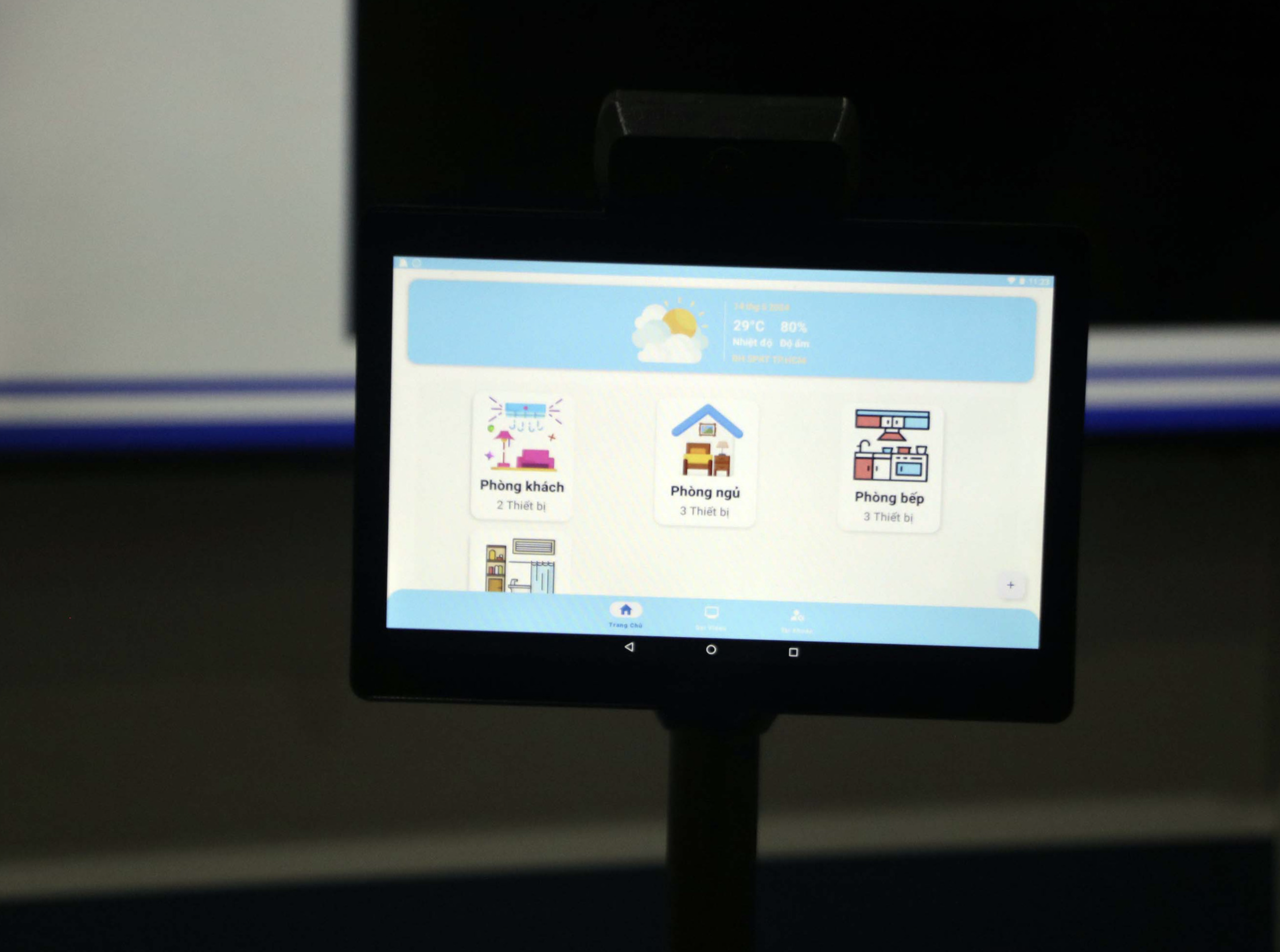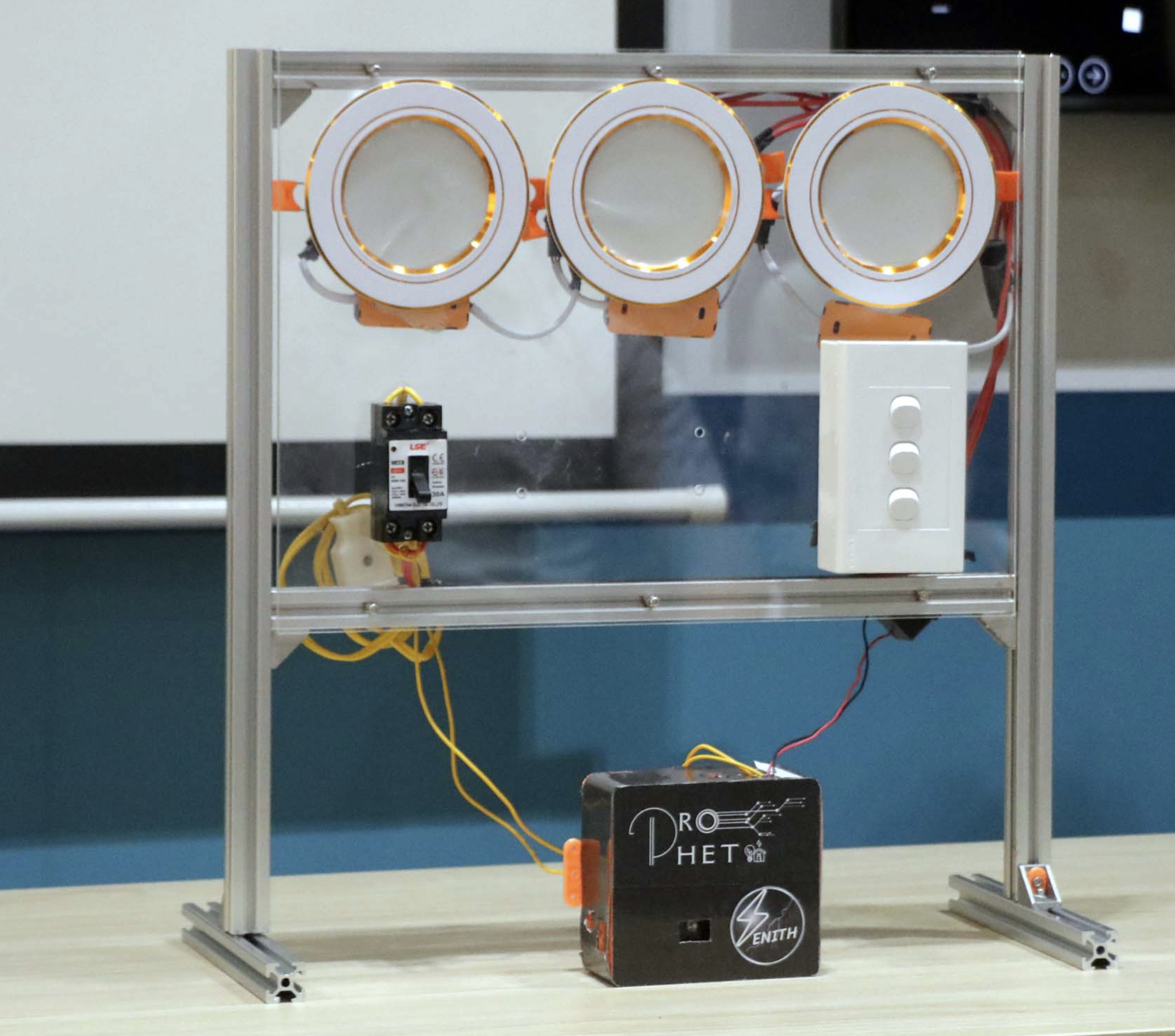A multifunctional robot created by a group of students at the Ho Chi Minh City University of Technology and Education to assist the elderly was introduced in the final round of a STEM program co-run by Arizona State University (ASU) and Dow Vietnam in Ho Chi Minh City on Tuesday.
The robot was one of seven typical engineering projects created by students in the eProjects program.
It can help the elderly walk, turn off or on electronic devices, and contact their family members in emergency cases.
Furthermore, the robot is able to predict some accidents such as a fall, faint, or stroke.
Luong Vu Hai Ninh, a student from the faculty of electrical-electronic engineering at the university, explained that the robot's control system was developed using artificial intelligence (AI) and Internet of Things (IoT) applications, compatible with Linux and Android operating systems.
The robot is outfitted with a bogie suspension system to ensure flexible mobility and boasts a touchscreen for monitoring and control purposes.
Users can utilize voice commands to assign tasks such as turning lights or the TV on or off to the robot.
Moreover, the robot was integrated with facial recognition capabilities, enabling it to identify and approach elderly people to provide assistance.
“Family members can make a call with their parents or grandparents at home via robot assistant and control the robot remotely,” Ninh said.
“The robot also plays music and shows videos to entertain users."
The most difficult step during the innovation facing Ninh’s group was using the AI and IoT applications for both Linux and Android.
These students spent over three months creating the robot to bring it to the innovation competition.
|
|
| A touchscreen on a robot for elderly assistance shows some functions. Photo: Trong Nhan / Tuoi Tre |
Expert Nguyen Vu Toan from Dow Vietnam, who acted as a mentor of the group, said that he was impressed by these students’ ability and efforts to research and create the robot, as well as respected their humane purpose.
Toan also said that the group would continue to improve the control system of the robot so that it can work well in a wide space and handle commands quickly.
Apart from the robot made by the students from the Ho Chi Minh University of Technology and Education, the eProjects program saw several innovation projects such as a device created to attract carbon dioxide by a group of students at Phenikaa University in Hanoi, and a gadget aimed at separating solar cells from solar batteries by students at Lac Hong University in Dong Nai Province, southern Vietnam.
A group of students from the Industrial University of Ho Chi Minh City brought an AI-based device to the program.
The device was created to monitor and manage the use of electricity of some household appliances.
|
|
| A device created by students from the Industrial University of Ho Chi Minh City helps monitor and manage the use of electricity. Photo: Trong Nhan / Tuoi Tre |
Like us on Facebook or follow us on Twitter to get the latest news about Vietnam!




Max: 1500 characters
There are no comments yet. Be the first to comment.